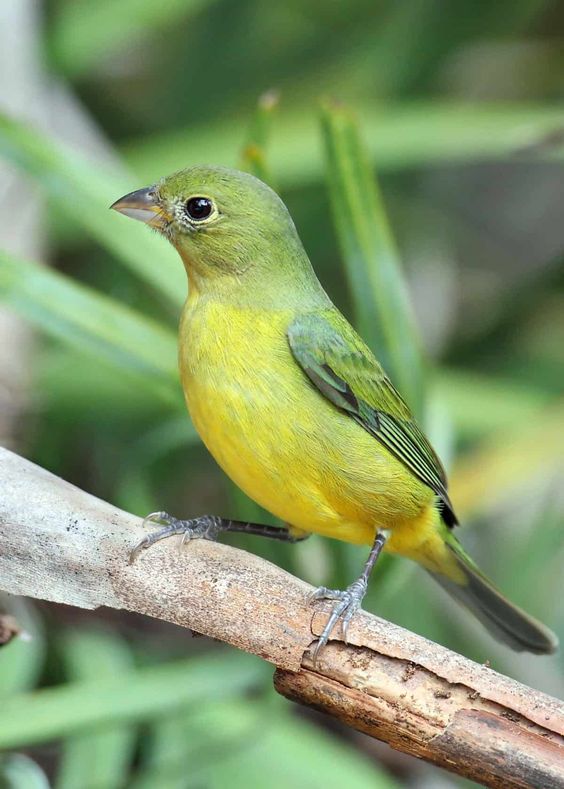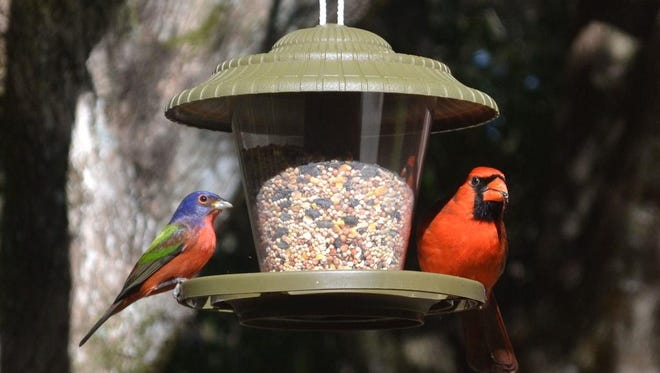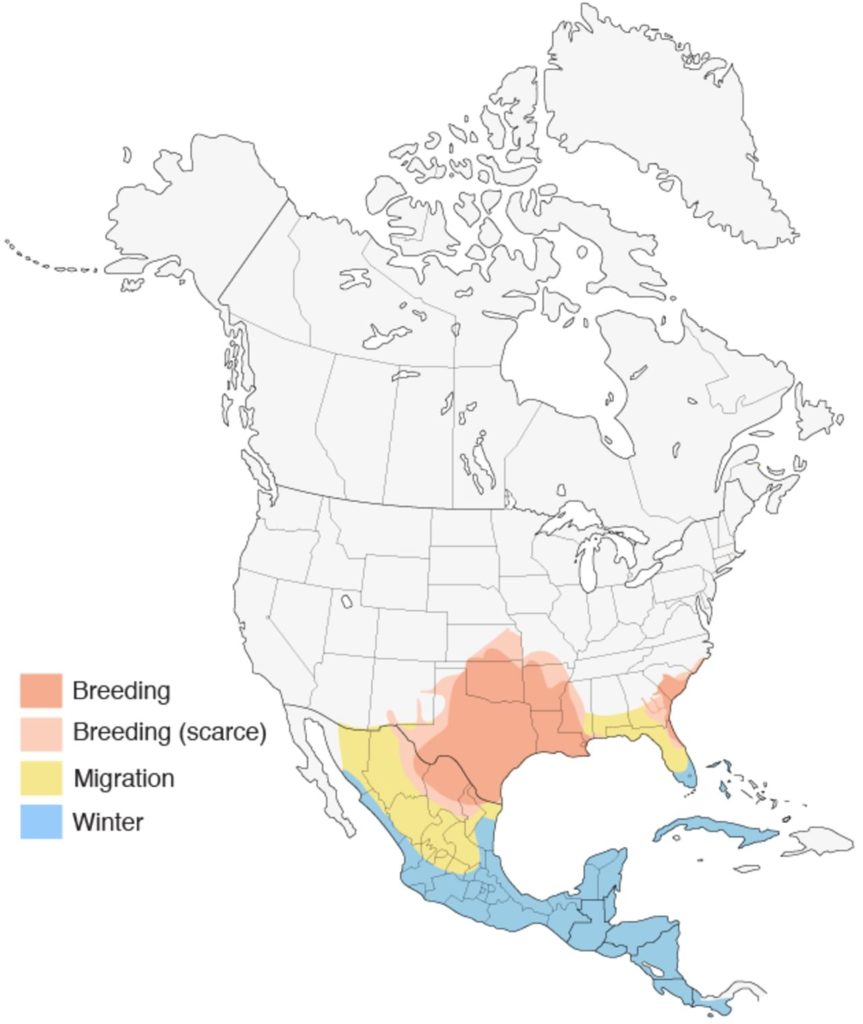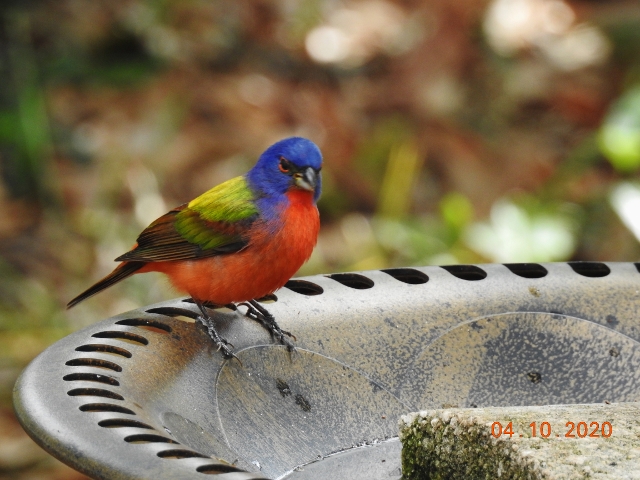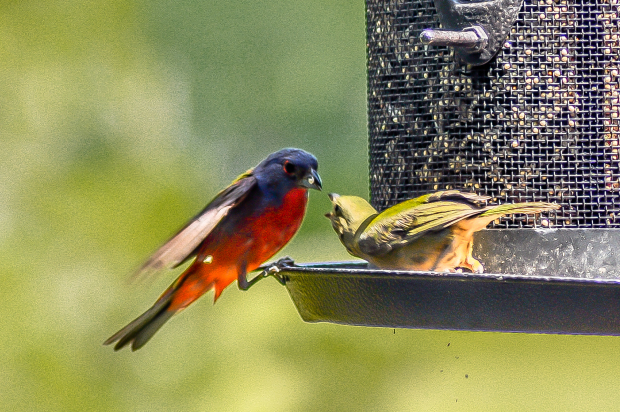by Doug Becker
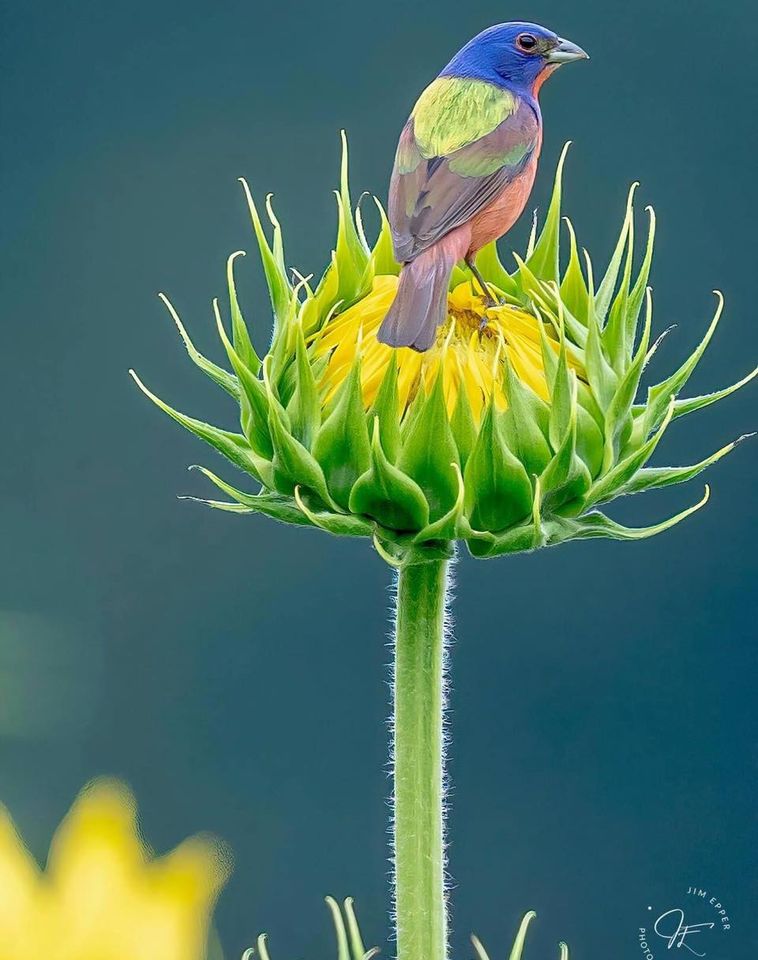
photo by Jimmy Epper
I’ve always enjoyed the Buntings. Who can deny the beauty of the Indigo Bunting singing his song in the summertime, or a flock of Snow Buntings taking flight in a snowy winter setting? There are 9 types of Buntings in the United States, and all of them are noteworthy, but it’s the Painted Bunting that stands out as one of America’s finest and most beautiful songbirds. In fact, the Painted Bunting is without a doubt one of the most colorful birds in North America. In France they’re called “nonpareil” which means “without equal” when referring to the Painted Buntings’ brilliant coloring. Here’s a bird we should all experience at least once. The experience will not be forgotten.
Description
These unique birds make me think of an art project with young children. After coloring a bird in bright gaudy watercolors, the painting begins to look like a Painted Bunting ready to fly off the page and through the window! In reality, the male adult is a stocky, finch-like bird with a short, stout seed-eating bill. His bright-blue head, green back, red rump and red belly makes for easy identification. The female and juveniles have their own beauty in uniform yellow-green plumage. High-quality binoculars or a scope are not needed to spot these beauties but they WILL really enhance your experience. I won’t leave home without them.
Range & Food
The Painted Bunting is a relatively common songbird that breeds in the coastal Southeast and the south-central states. As year-round seed eaters, they can be found in thickets and at the edges of fields and forests where seed-bearing vegetation is plentiful. And, with a good-sized serving of White Proso Millet, or black oil sunflower seed, the Painted Buntings may become regulars at your backyard feeder. This would give serious competition to the Cardinals and Blue Jays for who’s the leading showoff at the birdfeeder. Where are my binoculars?
Nesting
Nest sites are selected by both the male and female. Dense and thick foliage is preferred, and usually, just 3-6 feet off the ground. The female builds a remarkable and complex nest in just 2 days. The base is built of Spanish moss and twigs from most local trees. This is firmly secured to a supporting plant. The inner cup is 2 inches wide, 1.5 inches deep, and is woven together with some combination of weed stems, leaves or bark, twigs, roots or grasses, and even tissue paper and rag scrapes. These materials are then bound together with cobwebs, and the nest may get lined with horsehair. All in 2 days! With her new home, she will lay 3-6 eggs, 1-3 times each year. Incubation period is 11-12 days, and the nestling period for each clutch is 9 days. This all takes place while the male perches nearby and sings his metallic “chip” call, or the sweet continuous ramblings of a male Painted Bunting while on the lookout.
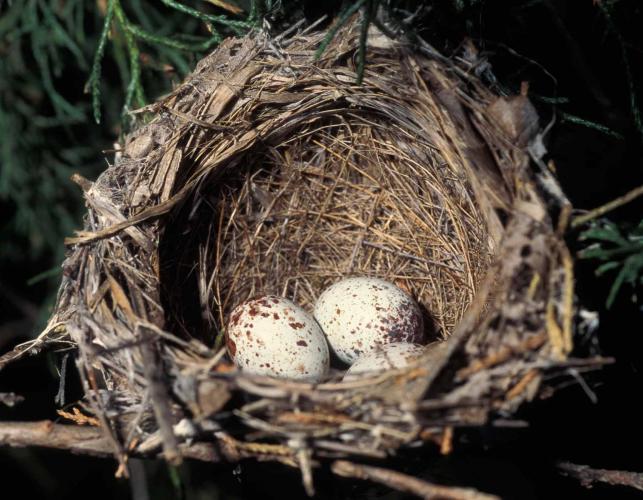
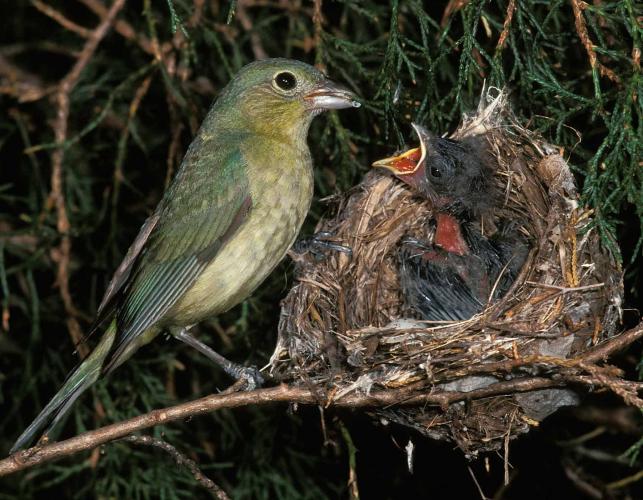
It’s not unusual to find my wife and me in the backyard sitting in our folding camp chairs and seeing what’s at the birdfeeders. Sometimes we’re lucky and a Painted Bunting or two will make their debut. I encourage everyone to put these Buntings on your priority list. Even if you don’t live within their territory, I’m sure you’ll be traveling through at one point. Keep lookin’, and I’ll see ya out there!


